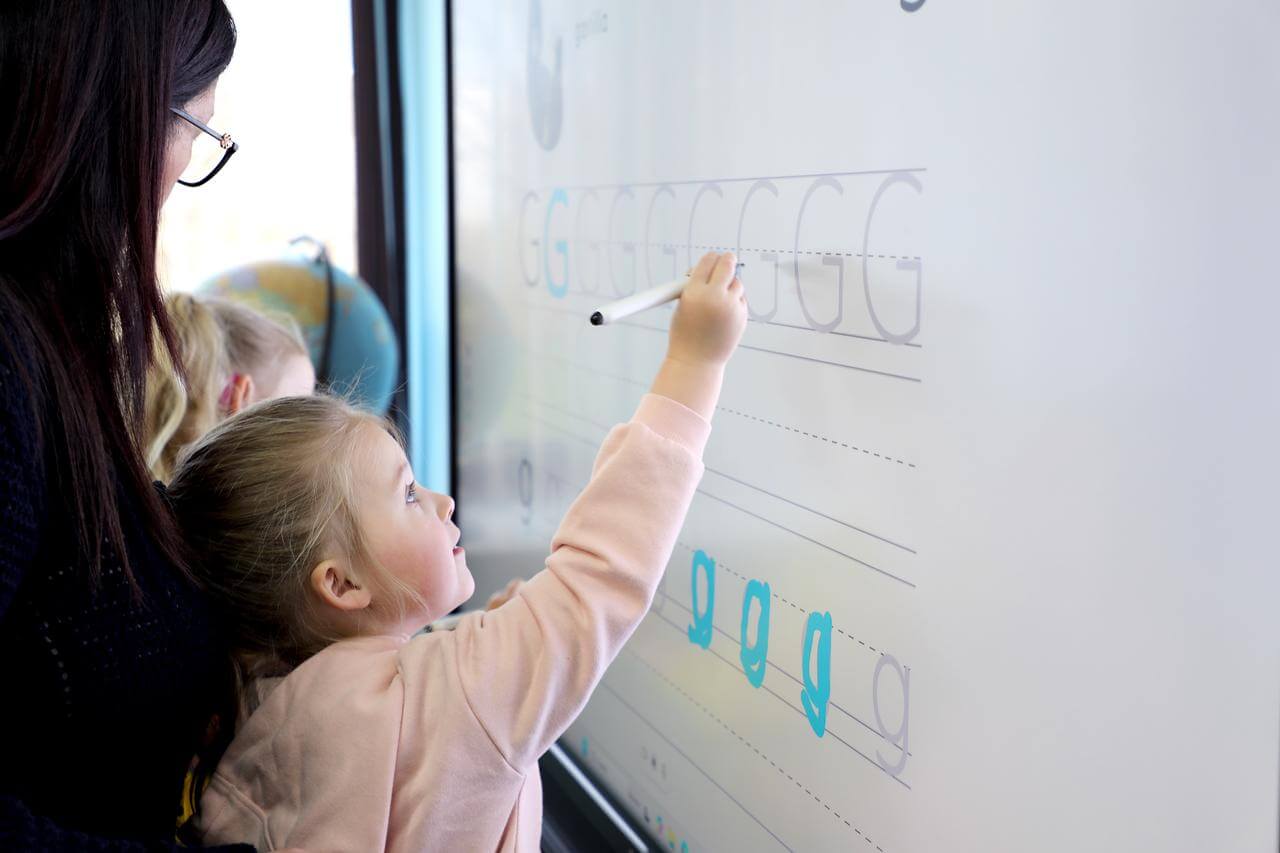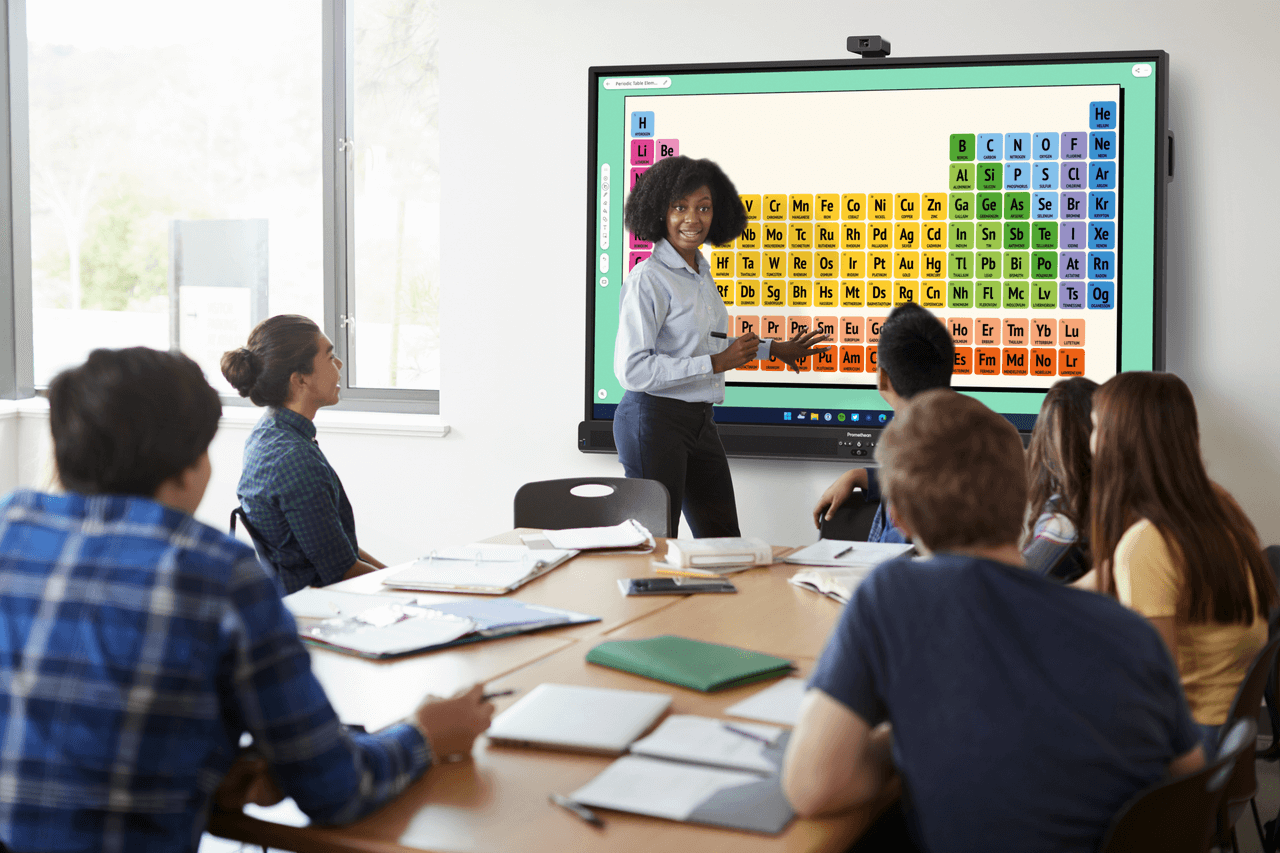Published on March 11th, 2025
Trauma-informed teaching strategies using interactive media
14 minute read

Summary
You’re reviewing some material you covered last week and call on a student who usually sits near the back. You know they know the answer because they aced the quiz a few days ago. But when you ask, they won’t make eye contact. They might even start shaking. What’s going on?
While it’s impossible to know for sure without a full evaluation, these are symptoms of possible trauma in the student’s past. Studies have shown that over half of kids aged 12 to 17 have had at least one adverse childhood experience. So whether or not you realize it, it’s likely you have kids who’ve been through trauma in your classroom. Kids who will face ongoing learning challenges. That’s where trauma-informed teaching practices come in.
Defining terms
Before we get into the specifics, let’s make sure we have a working definition of trauma and trauma-informed teaching.
What is trauma?
The American Psychological Association defines trauma as “an emotional response to a terrible event like an accident…physical or emotional abuse…or the death of a loved one” to name a few examples. It’s not surprising that kids in your classroom may have been through an event like this.
Another way to look at trauma is as a paradigm shift. It’s an event that changes how you see the world around you. Maybe a student has lost trust in adults after abuse, or they have developed a fear of driving after a car accident. With that lack of stability comes psychological and physical symptoms that can include unpredictable emotions, flashbacks, headaches, and nausea among others.
What is trauma-informed teaching?
Trauma-informed teaching is an approach that adopts a series of learning principles to help students work past their trauma and succeed in an academic environment. At its core, trauma-informed teaching aims to build students’ sense of safety, trust in others, and ability to collaborate.
Recognizing trauma response behaviors in the classroom
Symptoms of trauma can be very hard to spot because they manifest in ways that overlap with many other issues and sometimes seem counterintuitive. Overall, we can group trauma symptoms into behavioral, emotional, academic, and physical symptoms.
Behavioral changes range from increased aggression to apathy to impulsive behavior and difficulty following rules. On the emotional side, students experiencing excessive anxiety or frequent emotional outbursts may also be exhibiting signs of trauma.
Symptoms like these often lead to academic challenges, including difficulty concentrating, declining academic performance, and avoiding school entirely. Physical symptoms such as headache, stomach ache, and sleeplessness are also common.
It’s important to note that symptoms result from the type of trauma a student has been through, which means that in a classroom, evidence of trauma in one student can be the exact opposite of another. For example, one student might show symptoms of trauma as apathy and lack of effort, while symptoms for another student manifest as perfectionist tendencies.
Remember, it’s not an educator’s job to diagnose trauma, but rather adapt their teaching strategies to the needs of their students. Many issues can cause the symptoms we’ve talked about, so it’s important to rely on professionals in trauma responses. Trauma-informed schools should have a licensed counselor or psychological professional available to assess the student accurately.
Trauma-informed practices with interactive media
Trauma can come from damaged relationships, dangerous situations, or any circumstance that is out of our control. Whatever the case, a student struggling with trauma affects the student’s ability to build healthy relationships. That’s why it’s so important to focus on building healthy, stable relationships with students to help them overcome the challenges they’re facing.
Two core aspects of teaching are personal interaction and classroom procedures. The key is building a classroom that can run smoothly while still allowing for the personal interaction students need. Let’s look at how you can use interactive media to build a trauma-informed classroom.
Establish safety
The initial step is establishing a sense of safety for your students, but safety can come in a lot of forms. Certainly, you need to make sure your students know where the fire escape is and who to talk to about bullies, but building a strong sense of security comes from more than just that. You can help by modeling consistent routines that minimize uncertainty. In effect, you want to be as predictable as possible. A student who knows what to expect when they interact with you is going to have a much easier time dealing with challenges. On a practical level, consider using an interactive display to walk students through a class-opening exercise that’s fun and maybe a bit silly. The point here is to show that you are approachable and normal rather than an adversarial figure.
Another aspect of creating a sense of safety is not emphasizing a single event or assignment too much. A student who has been through a traumatic event often struggles with heightened anxious responses. To help avoid high-pressure situations, consider using software like Explain Everything Advanced to create low-stakes quizzes rather than an exam that is worth half of their course grade. Failing one or two quizzes won’t have much impact on a student’s grade since they are so frequent, and interactive displays allow you to run them easily every class period.
Build trust
Often, students who have been through trauma have significant trust issues. A foundation for earning trust in the classroom is sharing the purpose of activities and assignments.
Cover why they need to know what you’re teaching them, how it is useful, and how it relates to other material. In effect, you’re explaining why you’re not wasting their time. This frames you as a co-worker and co-learner while still maintaining your position of authority. Interactive technology lets you communicate student expectations and how they can reach those goals. You can do this by taking class time to go over what each assignment is about and giving students the chance to push back on what you are covering.
Use collaborative whiteboard software like Explain Everything to create a class agreement that students can weigh in on. It’s a document that you create at the start of a semester with students so that everyone agrees upon expectations and behaviors for the class. If you have a policy students have a problem with, they can easily bring it up for discussion.
Specific positive feedback is also a big part of establishing trust. For example, suppose you’re grading a paper on Othello. Don’t just say “Nice work.” Instead, point out how much you appreciated their unique take on the culture of the time and how it compares with other critics. The same applies to negative feedback. If there’s a problem with an assignment or behavior, make sure you are specific about what the problem is and why it’s a problem. Telling a student that they’re “just not doing very well” is both unhelpful and incredibly frustrating.
Engage in active listening
Give students your full focus when you’re talking to them. This can be almost impossible in a full classroom with multiple students asking you questions, which is where interactive technology comes in. Set up digital journals or online discussion forms to give them the space to share what they are going through. With asynchronous communication, you can take the time you need to understand the student better and go into in-person conversations already understanding what they are struggling with.
In your interactions, validate their feelings by acknowledging their emotions and letting them know they are understood. Ask questions like “What do you find most interesting in the book?”, “Can you tell me more about that?” or “ Why do you think you saw it that way?” Nine times out of ten, if you ask a student enough open-ended questions, they will find the answers they’re looking for themselves.
Find shared experiences
This can be tricky because it can come off as disingenuous, but the key is looking for places where you have similar, not necessarily identical, experiences. Often, you’re not likely to organically find shared experiences in a classroom setting. Interactive technology can help in a few ways. You can learn about what students are comfortable sharing with questions on interactive displays about personal preferences and experiences. For example, You might open a class poll that asks “What’s the strangest thing you’ve seen while on vacation?” or “What is something you wish was different about the world?” These kinds of questions can lead to deeper conversations, but also let students comfortably interact publicly.
Interactive media can also create shared experiences in themselves. Playing classroom games that test student knowledge, or creating social groups of shared interests and hobbies can also build connections within the class and between you and students.

Self-care resources for educators
If you’re a teacher, chances are you got into it because you care deeply about students. This is what makes you a great teacher. But, it also means you have to take the steps you need to be the best teacher to all of your students – which means avoiding burnout. There are a few resources out there to help you manage the challenges of trauma-informed teaching:
- A resource from the University of Tennessee covers five key tips to take to prevent missteps and burnout.
- The American Institute for Research provides a webinar on self-care to help teachers ensure they are practicing good self-care.
- The Council for Exceptional Children offers a summary of the literature on the subject and provides some good starting points for book recommendations.
- The California Teachers Association advises on self-care and trauma-informed teaching, including when to seek outside help.
- A resource from The Institute of Education Sciences includes information on why self-care is important and how institutions can support teachers in building a trauma-informed classroom.
Take the first step in building a trauma-informed classroom
No matter how you slice it, teaching is hard. At the same time, the diversity of student personalities and experiences is one of the things that make it so worthwhile. Unfortunately, that also means many students come into your classroom with problems you can’t even imagine. You are not their therapist, their parent, or their friend – you are their teacher. It’s on you to build a space where they can learn and thrive.
If you’re ready to start equipping your classroom with technology that can facilitate better trauma-informed teaching, request a free demo of the Promethean ActivPanel.
Further reading:




